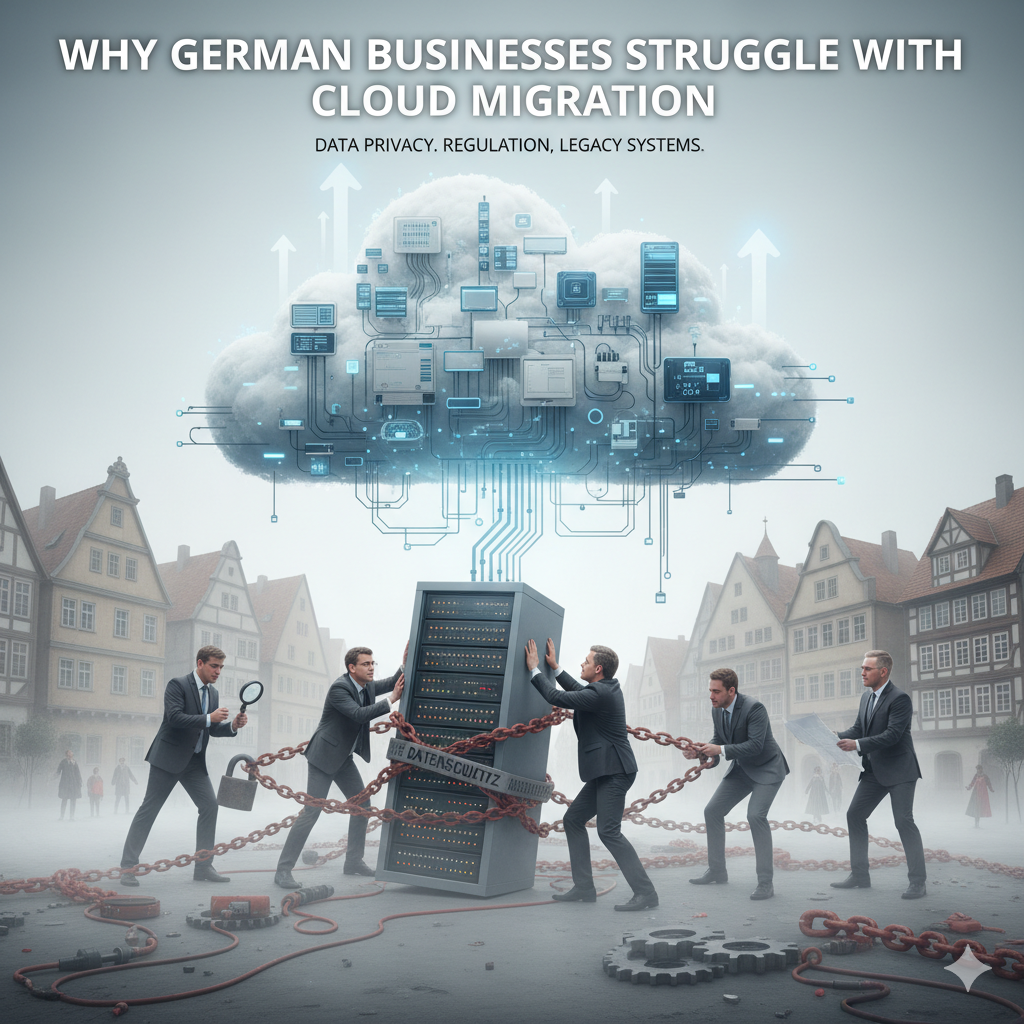Introduction
Cloud adoption in Germany is accelerating, but many organizations — from SMEs to large enterprises — continue to face significant challenges when moving their IT infrastructure from data centers to the cloud. Despite the clear advantages of scalability, flexibility, and cost optimization, migration is not a straightforward journey. In this article, we explore the common reasons why German businesses struggle with cloud migration and how these challenges can be overcome.

Cloud Migration Challenges in Germany
1. Data Privacy and Compliance Concerns
Germany has some of the strictest data protection regulations in Europe, with GDPR compliance being only the starting point. Many businesses fear losing control over sensitive data when moving to public cloud environments. The complexity of ensuring data residency, encryption, and compliance with German and EU regulations often slows down decision-making.
2. Legacy Systems and Technical Debt
A large number of German companies still rely on legacy infrastructure, monolithic applications, or outdated virtualization solutions. These systems are not cloud-ready and require modernization before migration. The cost, time, and risk of refactoring or re-platforming applications make businesses hesitant.
3. Skills Gap and Lack of Expertise
Cloud transformation requires specialized skills in architecture, automation, DevOps, and security. Many companies struggle to find or train IT staff who can design and execute a secure, scalable migration strategy. This lack of expertise often results in project delays, cost overruns, or failed initiatives.
4. Business Continuity and Downtime Fears
German enterprises value reliability and operational stability. Even the idea of short downtime during migration can be perceived as too risky, especially in manufacturing, finance, or healthcare sectors where availability is mission-critical.
5. Cost Transparency and Vendor Lock-in
While cloud promises cost savings, businesses often underestimate expenses such as data egress fees, storage costs, or premium services. Fear of vendor lock-in with major cloud providers (AWS, Azure, Google Cloud) is another factor that slows adoption.
How German Businesses Can Succeed with Cloud Migration
- Hybrid and multi-cloud strategies: Allow businesses to migrate step by step while keeping control of sensitive workloads.
- Modernization before migration: Virtualization, containerization, and automation smooth the transition.
- Investing in expertise: Partnering with migration specialists or training internal teams reduces risk.
- Strong monitoring and observability: Ensuring visibility into workloads before, during, and after migration helps maintain reliability.
Conclusion
Cloud migration is not just a technical project — it’s a transformation of business operations. By addressing compliance, legacy systems, skills, and cost transparency, German businesses can overcome their migration struggles and unlock the true potential of the cloud.
At Nyobit, I provide expert support for businesses starting their cloud migration journey.